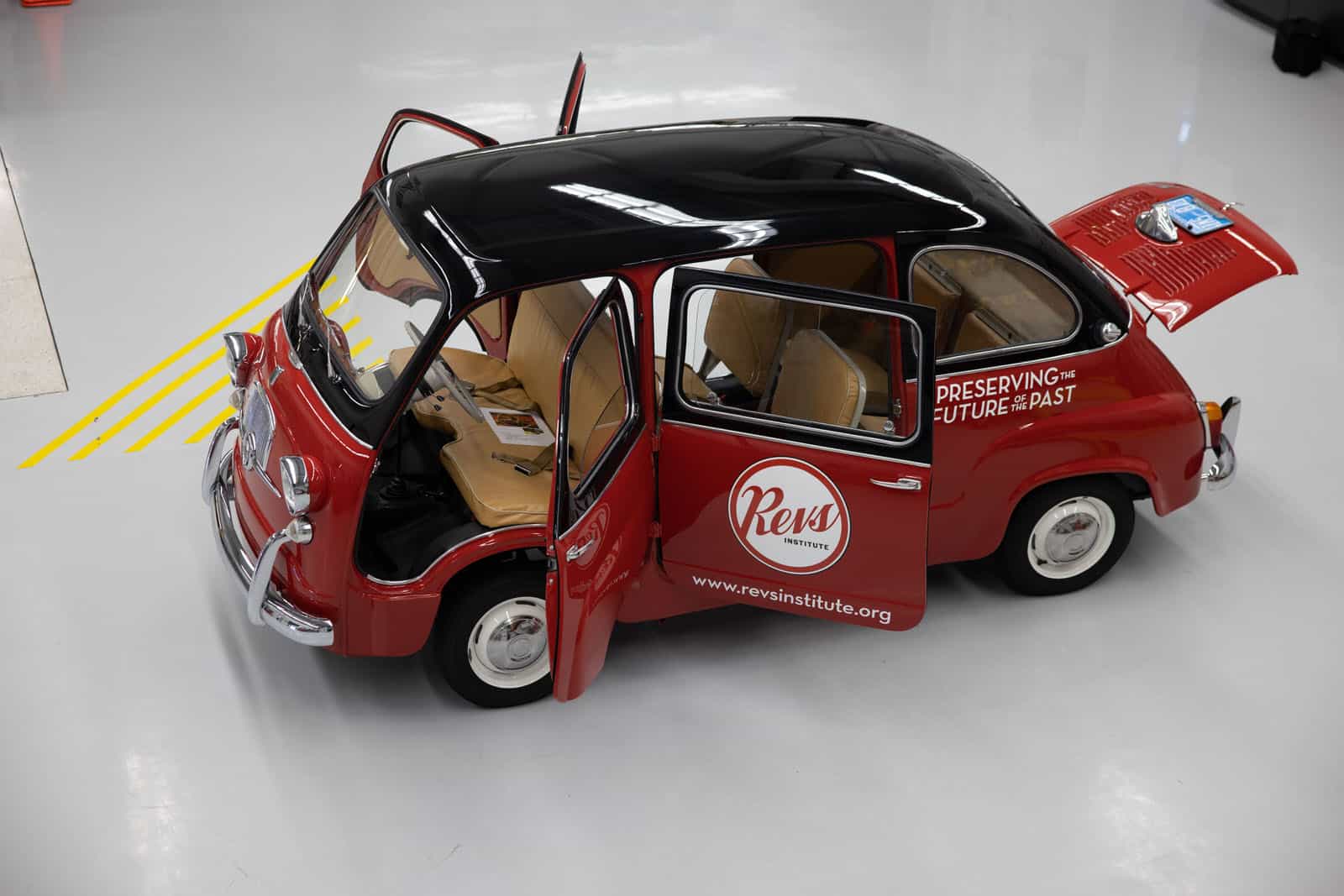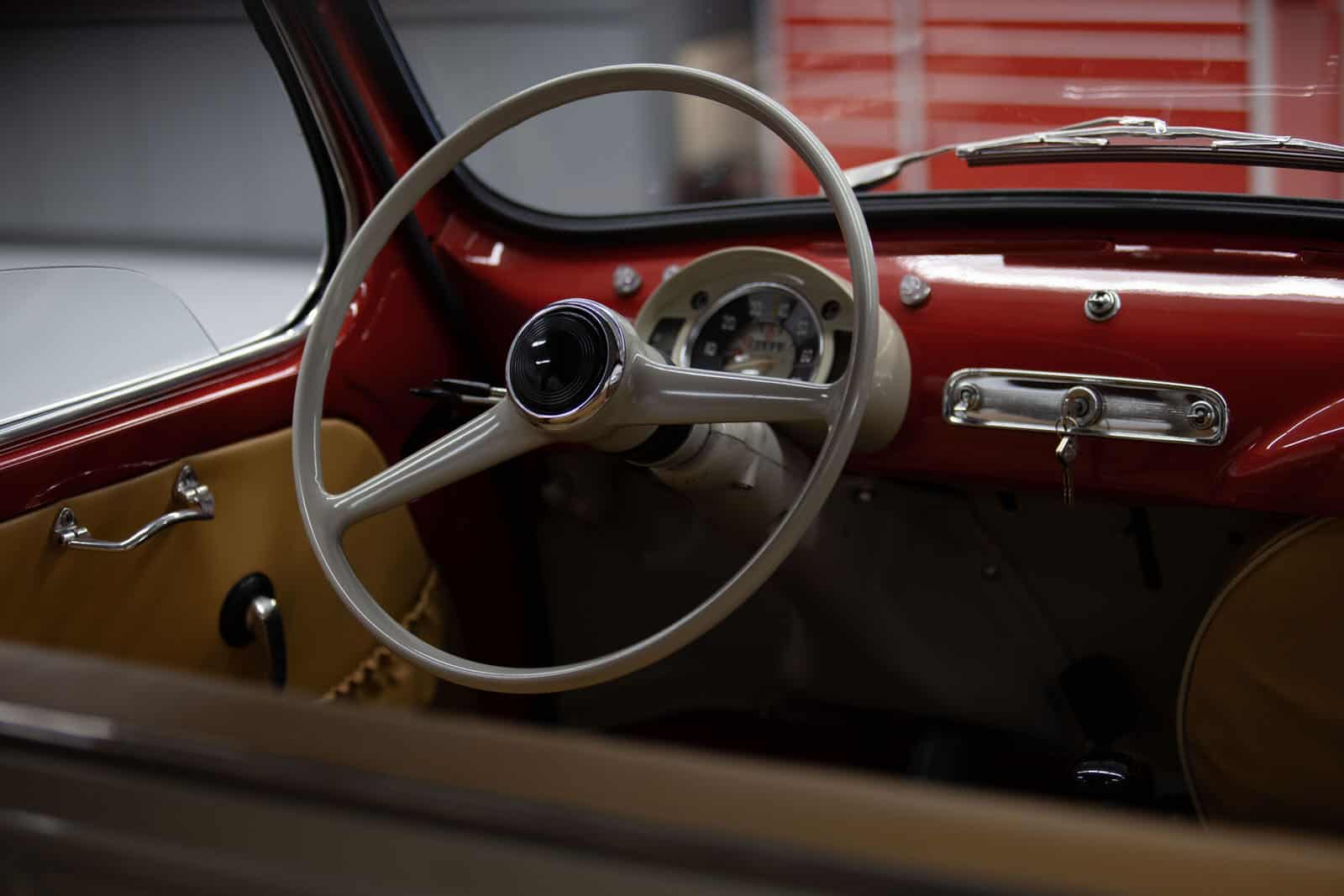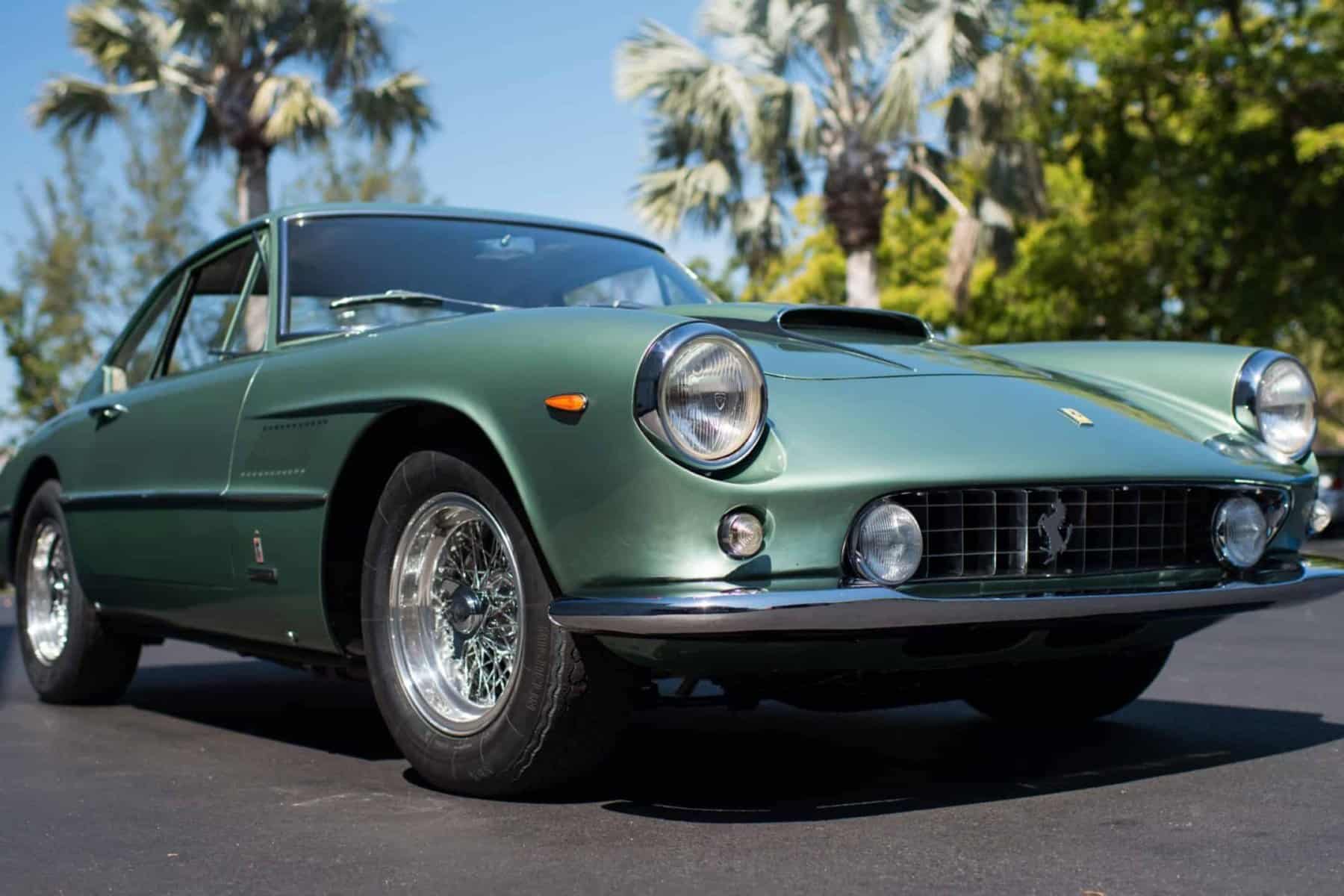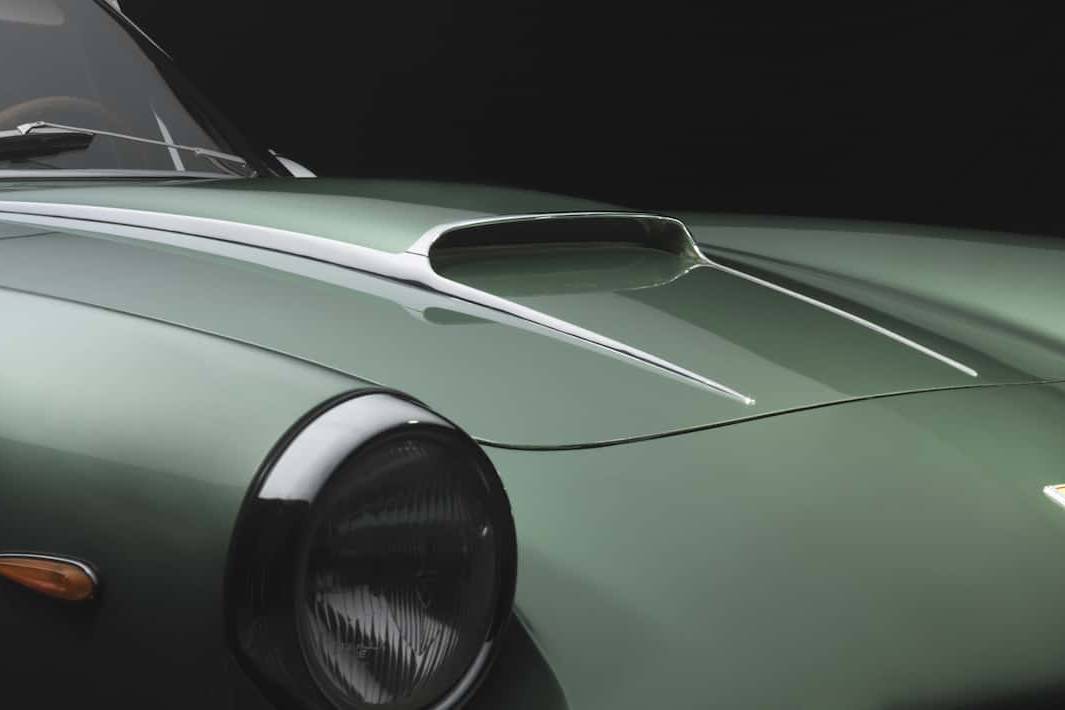Archaeological Restoration: Fiat Multipla
How a challenging project raised this shop’s game
BY: MILES C. COLLIER
PHOTOS: REVS INSTITUTE, FIAT
The Fiat Multipla reminds me of something from a 1930s-era science fiction movie.
You may not know the Multipla, the Volkswagen Microbus equivalent in the Fiat line. It was based on the Fiat 600 and later 600 D, sedans of the late 1950s and early 1960s. It is roughly tear-drop shaped, and, as with the Microbus, the front seat occupants are positioned right up against the front sheet metal of the car. The steering column goes straight down between the driver’s knees. The passenger’s knees almost touch the spare wheel, vinyl covered for cleanliness, which is mounted flush against the front panel.
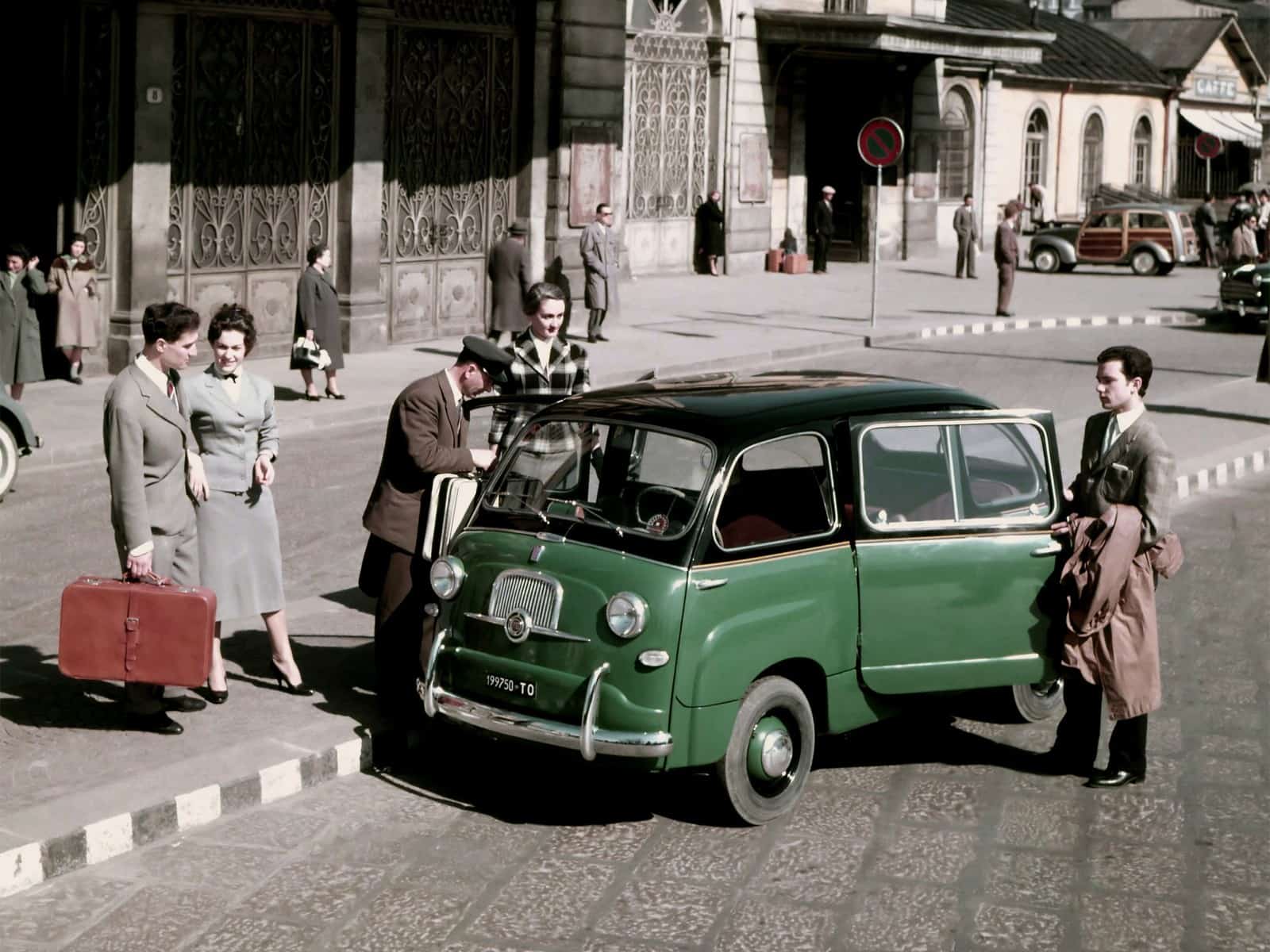
Like its sedan sibling, the Multipla 600 had about 25 horsepower on tap. As the point behind the Multipla’s design was to accommodate six passengers, the more rearwards sitting in four individual folding seats, fully burdened performance wasn’t notably savage. Like so many basic transportation cars of its time, the Multipla was intended to be ephemeral: used and disposed of as required. This here-today, gone-tomorrow nature of Italian cars from this era is underscored by their notorious susceptibility to rust; and the Multipla corrodes like Alka-Selzer plopped in a glass of water. You can almost hear it fizz when driving in the rain. Over fifty years after Fiat ceased making them, you can’t find a solid, unrusted, original example for love nor money.
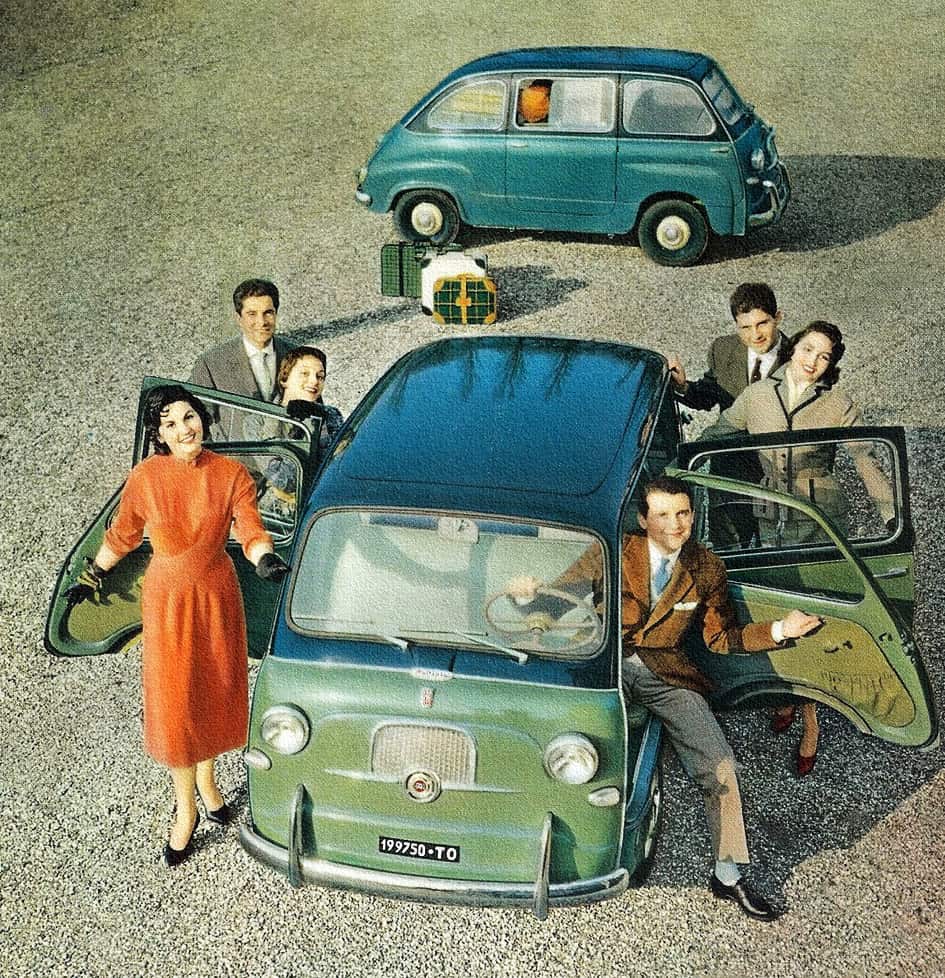
Naturally, with all these charms, I had to have one. It took almost ten years of on-again, off-again looking to find a solid, unrusted (by Multipla standards) example in Chicago. Its saving grace had been that thirty or more years ago, it had been taken off the road when its engine failed. It was stored in the proverbial barn where mice had their way with it, building countless nests inside the structure and tunneling through the seats. But it was structurally solid.
It wasn’t in my favorite color combination, black over red two-tone with white wheels, but it had a handsome tan vinyl interior. As Revs Institute’s logo is red, black, and white, the color seemed foreordained. Naturally, my wife, who likes to name cars, immediately christened it “Stendahl” after the 19th Century French author who is credited with writing literature’s first psychological novels, the most famous of which is The Red and the Black.
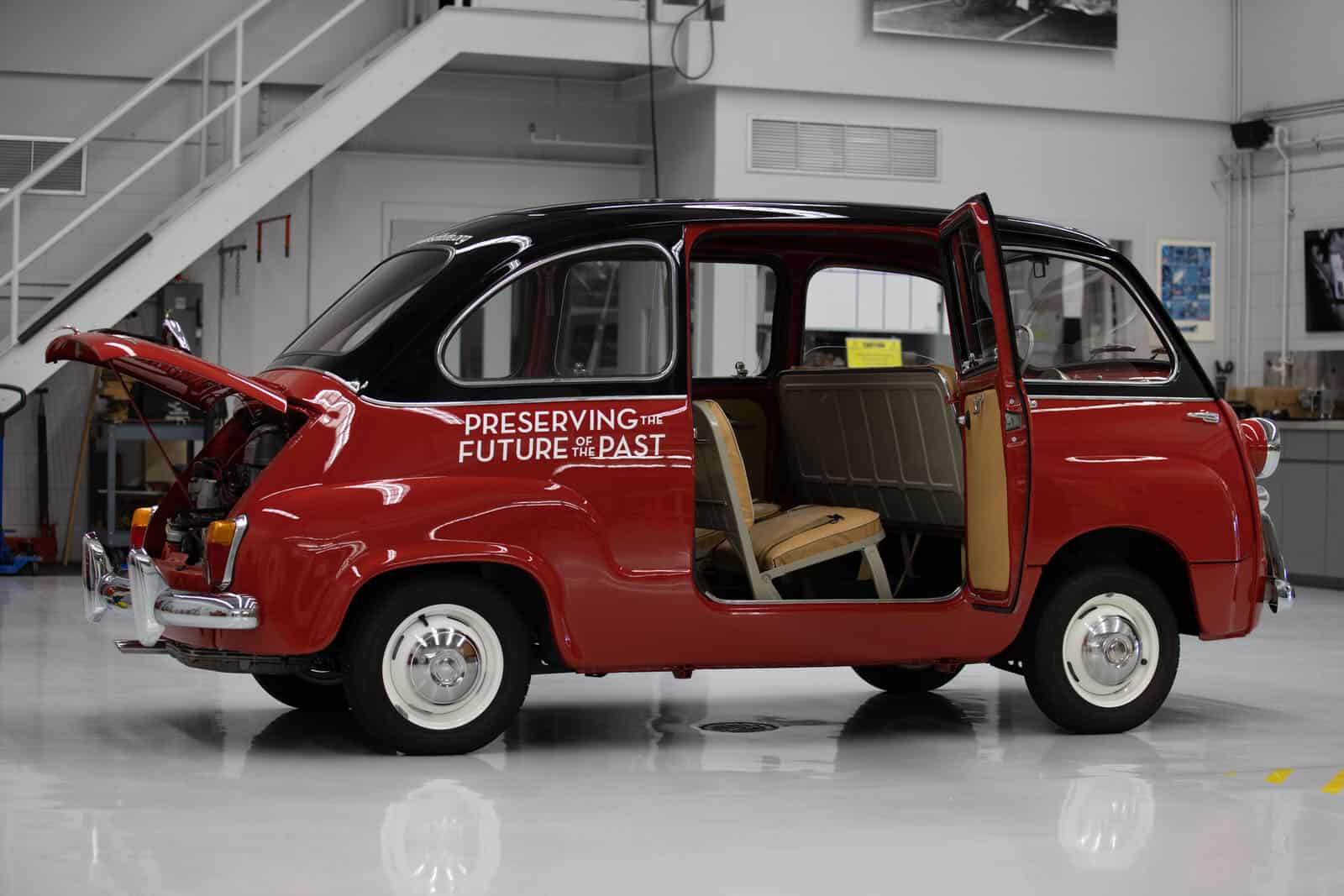
Stendahl, the Multipla, represents an addition to my small sub-collection of brilliant cars created under rigorous financial constraints. It accompanies such other examples as a Volkswagen Beetle, a Citroen 2CV-based Sahara (the two engine, 4X4 version), a 1071 Austin Mini-Cooper S, and as comic relief, a Trabant 601, the pure embodiment of a socialist clown car. With its “styled by Ming the Merciless out of Flash Gordon” look, and intelligent design by Dante Giacosa, the Multipla fits right in.
As my current research is focused on the archaeology of automobiles, we decided to use the Multipla as a laboratory for an “archaeological” restoration. Such an approach involves intense analysis of the unrestored automobile in a search for the stories that its physical materiality tells us about its making and its subsequent working life. For example, why would its outside rearview mirror have been relocated on the driver’s door a half-dozen times, as the dozen screw holes attest?
This project would be a demanding and finicky restoration because of its obsessive focus on the minutest details of the car’s individuality. Of course, the Multipla was a high-volume, low-price, mass-produced car built for Italian families of limited means who needed a utility vehicle with lots of seats and lots of room. Our car’s shell required complete refinishing due to poor repairs in the past (all those mirror screw holes), minor rust, and light damage. At one time the car had become rodent-infested, so this effort would be a restoration, not a conservation. But withal, our Multipla was remarkably original and sound. We had plenty to work with.
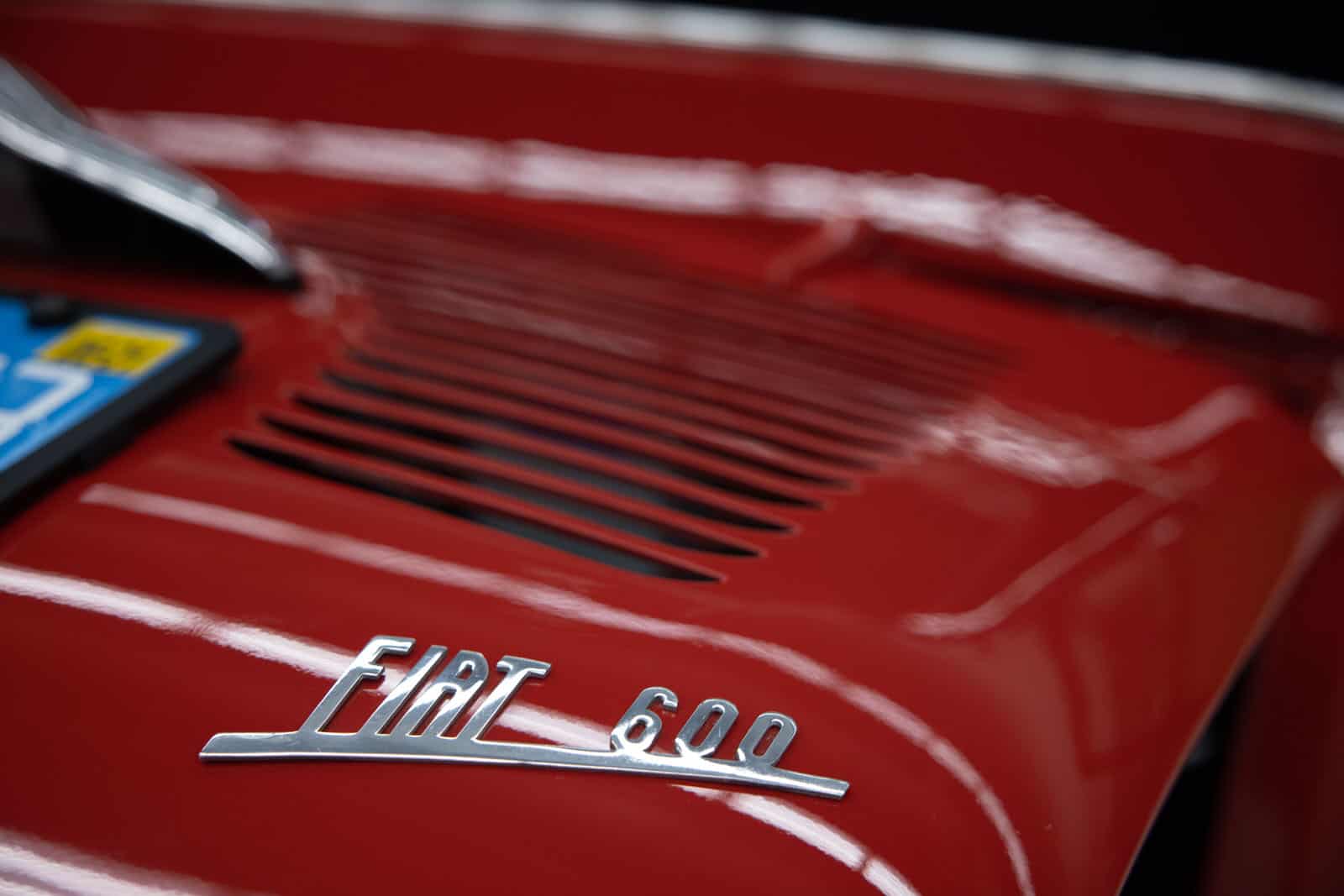
The challenge came from our two set objectives: first, conserve and re-use every bit of original material possible, and second, accurately duplicate the quality, pattern, and details of the original Fiat-built car in all aspects. Once the restoration was complete, the car should be indistinguishable from a new Multipla of the 1960s.
What exactly was the build quality of a high-volume, low-price, mass-produced Fiat in 1960? The answer we derived from careful examination of our original, untouched Multipla was this: plenty of “bling,” but very much built down to a price, not up to a standard. For example, parts of the unibody that were protected by mats, or covered with vinyl upholstered panels, weren’t painted with the final color. Fiat considered it sufficient for the overspray from painting visible areas to fall where it would on those soon to be hidden, primed surfaces.
Another example: two types of vinyl material were used in the interior, a more durable and hence expensive cloth-backed non-expanded vinyl on the seats, and the same vinyl, minus its costly cloth backing, on low-wear door and side panels. Fortunately, the seat coverings, excepting the long-ago inaccurately recovered front bench seat, were in fine condition, only mouse-infested and dirty. The interior upholstery material had a faint herring-bone embossed pattern that we feared was going to be difficult to source when it came time to recover the front seat. Ultimately, through my good friend Gundula Tutt, German automobile conservator extraordinaire, we obtained the stuff in Italy.
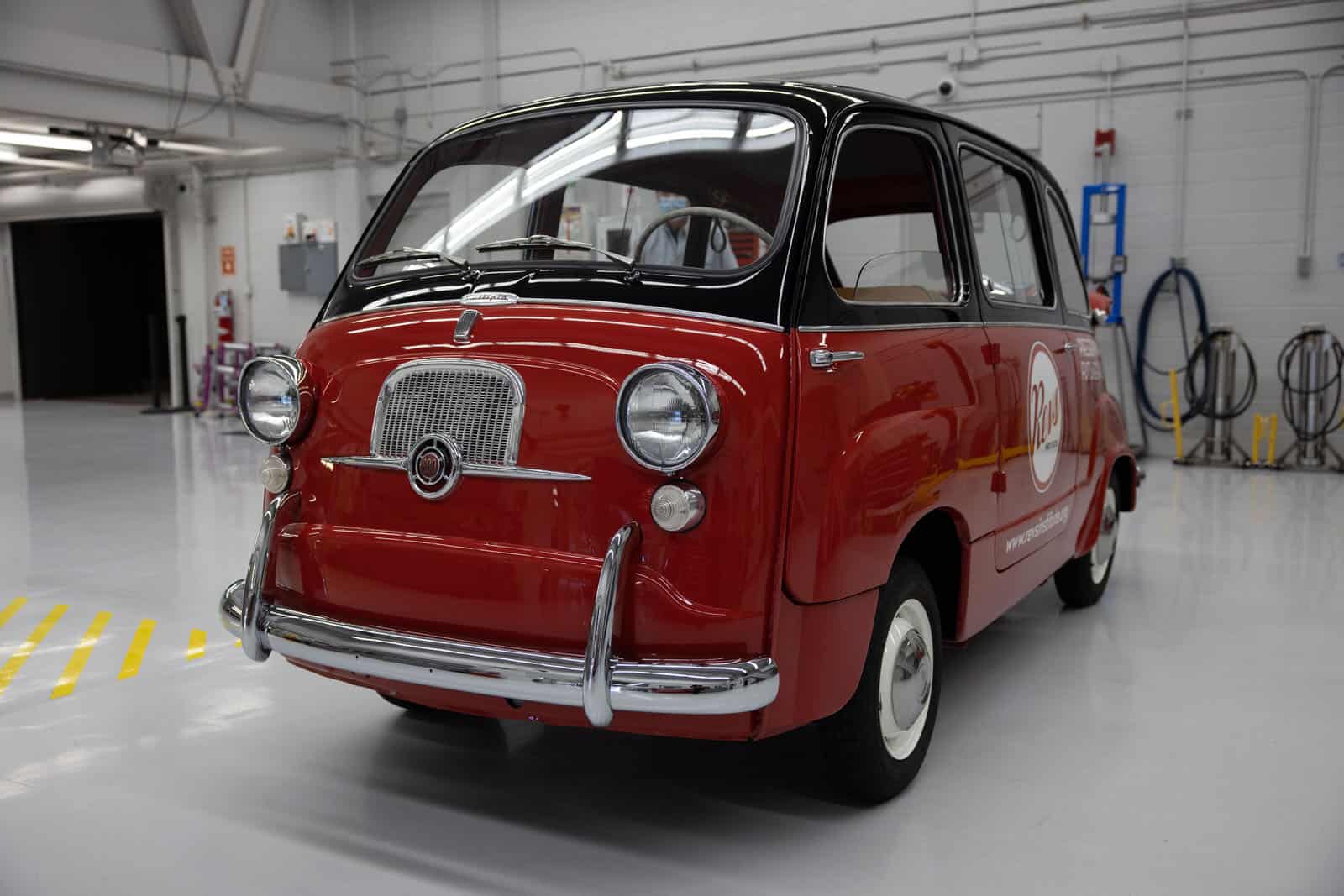
Close reading of the car’s unibody showed that it was first painted red below, and then black on top. In order to minimize expensive, time-consuming masking tape, Fiat used special push-in window plugs that protected the previously red-painted window pinch welds from the black paint on the body that surrounded them. These plugs didn’t leave the sharp paint line so indicative of masking tape, but a fuzzy, overspray edge. Likewise, the welded-in seat pivots showed a paint spray pattern that indicated they were painted in the upright, not horizontal, position. Where taping was required at the color join between the red and the black, we saw that the right front A-pillar showed a taping misalignment with the bright trim that was to come.
We were able to salvage all the aluminum trim through metal-finishing, polishing, and re-anodizing where anodizing had been originally used. Zinc plating proved to be the most difficult process to replicate. Modern zinc plating has a distinct blue hue unlike the slightly yellowish gray of period zinc. In all, we sent some zinc finished components back four times before an acceptable look was obtained. The chrome bumpers also had to be re-plated, as they had lost a few battles in the parking wars of long ago.
New rubber floor mats had to be sourced, as the originals were split and decaying. The reproduction set we found was inferior to the factory-original set, but we have found that to be the case with most reproduction parts, and not just for high-volume, low-value cars. The reproduction parts market seems to be characterized by getting things 85 percent correct and then going home.
Our biggest remaining challenge lay in refinishing bare steel parts such as the diaphragm in the electric horn. Corrosion had to be removed without leaving rust pits or tooling marks from sand papers, or creating an overly polished look. Microcrystalline wax was used in assembly of such components to prevent rust reoccurring.
As I have said many times, all restoration is fictional. It is based on our archaeological imagination coupled with close examination and can only give a fair approximation of what once was. In the case of the Multipla, the biggest deliberate deviation from stock occurred with the engine rebuild. The original had disappeared, which, with its 25 or so horsepower, would have presented a very serious safety problem in high-speed, modern traffic. As an unoriginal engine was going to be required in any case, we elected to build a stock-appearing, over-bored and hot-rodded 1100 cc, 80 horsepower engine from a mix of Fiat 600 and 850 components. This new engine would make the Multipla safely road-useable.
There are two giveaways visible upon inspecting the finished engine: the first is the two-barrel carburetor that replaces the original single throat model. This required a modification of the original air cleaner outlet to make it fit the twin choke unit. Second, we built a set of tuned headers in the Abarth tradition, as it was material to getting those extra horses. While looking like an original Abarth accessory from outside the car, our “basket of snakes” header as seen in the engine compartment bears no resemblance to period practice, but it is easily removed if not wanted.
Considerable effort went into uprating the radiator for its job of handling three times the original heat load. As no available high-capacity radiator for the Fiat 600 actually looks like the original, we built replica tanks for our new, high performance, aluminum core. Appropriately painted black, the car’s cooling system is now indistinguishable from the original.
The car is now capable of running with modern traffic on urban streets. In the interest of additional life-safety, seat belts were installed for all six seats as well. Of course, the alert reader will comment that just driving such a tiny and flimsy contraption on public roads is a death-defying feat that seat belts will probably not ameliorate. And the reader would be correct. Nevertheless, it is our hope to keep this Multipla alive in the present as a working example of a past time. Operated with care, and only occasionally, we believe it will evoke interest and delight from all who see this remarkable little car.
So, what was the point? The exercise raised the shop’s game by focusing intensely on seeing, interpreting, and replicating Fiat factory build practices of the 1960s. Because the car was not artisanally built as were so many of today’s high value, important collectible cars, and because those automated processes produced certain subtle, but characteristic evidence such as paint texture variability caused by the painter’s access to different areas of the car, we were forced to analyze how the car was originally built, what the standards of the day were, and the way the failure points of those original manufacturing decisions developed over the ensuing fifty years.
Working on important and monetarily valuable automobiles with their more distinctive signs of design, making, and use will be all the easier thanks to this “valueless” but important little car.

